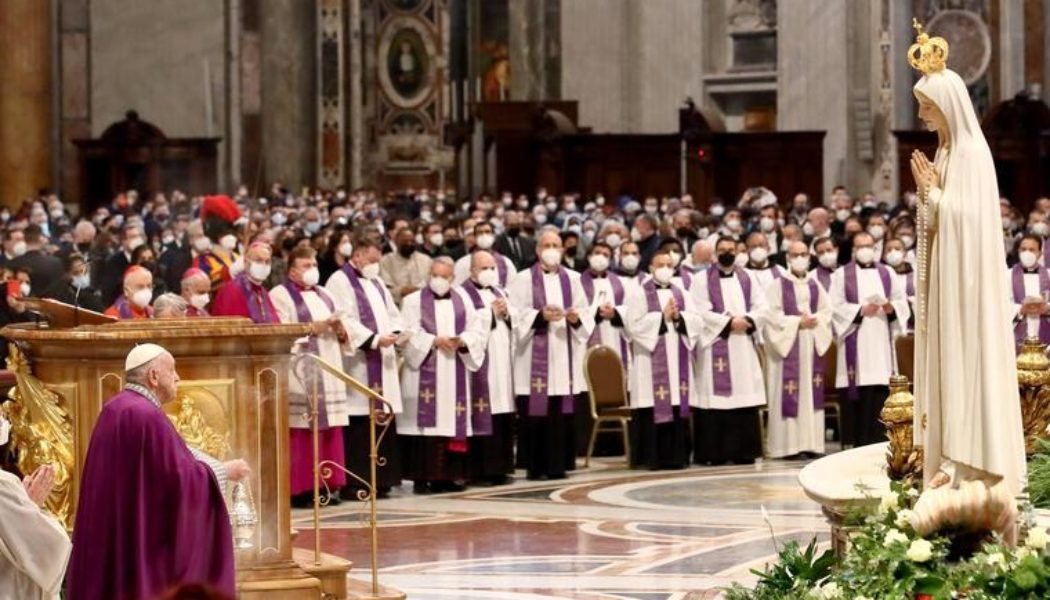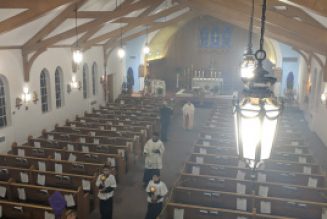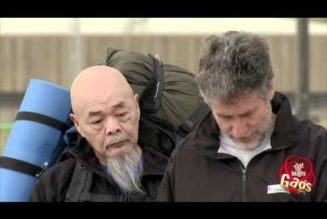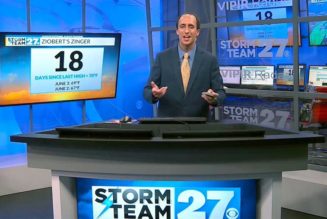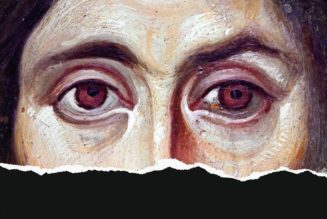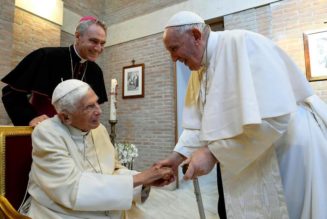
On Friday, the Dicastery for the Doctrine of the Faith (DDF) released a document titled Norms for Proceeding in the Discernment of Alleged Supernatural Phenomena. Accompanying the document was a note by Cardinal Victor Fernández — the head of the DDF — introducing it and explaining the reasons why it was written.
This document revised, replaced and expanded a previous document issued by the then-Congregation for the Doctrine of the Faith (CDF) in 1978.
Apart from matters of detail, there are several notable shifts in the approach that the new document takes. These include (1) the scope of the document, (2) a procedure of greater transparency, and (3) a new classification system for apparitions and other supernatural phenomena.
When it comes to scope, the 1978 document dealt only with “presumed apparitions and revelations,” while the new one expands its coverage to phenomena “such as alleged apparitions, visions, interior or exterior locutions, writings or messages, phenomena related to religious images, and psychophysical phenomena” (no. 6). These also include reported Eucharistic miracles.
The greater transparency is illustrated in two ways. First, when the 1978 document was released, it was distributed on a confidential basis and was meant only for bishops and their associates. However, it leaked (including on my website, jimmyakin.com), and it was published only in 2011 — 33 years after it was originally released. By contrast, the new document was immediately placed on the Vatican website and a press conference introducing it was held.
Second, when the 1978 document was in force, local bishops were expected to submit their findings and conclusions about apparitions to the CDF for review and approval before announcing them (4:2). However, when the Congregation approved the bishop’s planned announcement, it would ask that its name be kept out of the matter, presumably to keep people from exaggerating what the CDF had done and announcing the apparition as “Vatican approved” or “Vatican condemned.” Henceforth there will be more transparency. Cardinal Fernández explains, “Now, when the bishop makes his decision public, it will be stated as ‘in agreement with the Dicastery for the Doctrine of the Faith.’”
At the core of the new document is a new way of classifying supernatural events. The list presented is not exhaustive, but the Church’s conclusions will be “usually expressed” in terms of six categories:
1) Nihil obstat (Latin, “Nothing obstructs”): Used for phenomena that are connected with “many signs of the action of the Holy Spirit” and so far “no aspects that are particularly critical or risky have been detected” (no. 17).
2) Prae oculis habeatur (“Let it be held before the eyes”): Used for phenomena that have “important positive signs” but also “some aspects of confusion or potential risks.” Consequently, “doctrinal clarification might be necessary” (no. 18).
3) Curatur (“It is attended to”): Used for phenomena that have “various or significant critical elements” but have nevertheless “spread widely” and are connected with “verifiable spiritual fruits.” In these cases, the bishop is not to encourage the phenomena and to “seek out alternative expressions of devotion and possibly reorient its spiritual and pastoral aspects” (no. 19).
4) Sub mandato (“Under mandate”): Used for phenomena that are “rich in positive elements” but that are being misused in some way, such as by “a person, a family, or a group.” Misuse might involve financial gain, immoral acts or defiance of the diocesan bishop (no. 20).
5) Prohibetur et obstruatur (“Prohibited and obstructed”): Used for phenomena that have “some positive elements” but have very serious “critical issues and risks.” The bishop is to “declare publicly that adherence to this phenomenon is not allowed” (no. 21).
6) Declaratio de non supernaturalitate (“Declaration of non-supernaturality”): Used for phenomena that the bishop has “found to be not supernatural” based on “facts and evidence that are concrete and proven,” such as a visionary admitting they lied, witnesses detecting fraud or mythomania (an excessive tendency for lying or exaggeration) (no. 22).
You’ll notice that what’s missing from the list is a firm declaration that the phenomenon is supernatural. Not even the nihil obstat implies that this is the case. Under the new norms, a phenomenon can still be declared supernatural, but it will require a special act of the pope (no. 23).
This has to do with the reasons for the new norms. In his accompanying note, Cardinal Fernández explains that the previous tendency to conclude that phenomena were either supernatural or not supernatural had undesired side effects. If phenomena were declared to be supernatural it “effectively oriented the faithful to think they had to believe in these phenomena, which sometimes were valued more than the Gospel itself.”
Fernández said that the lack of public clarity also contributed to confusion about the status of apparitions, and he noted that the need to establish that an apparition is supernatural in order to give it some form of approval caused extensive delays. Before committing the Church — or even a local diocese — to the idea that an event has been established as supernatural, special precautions were needed.
Fernández notes: “The expectation of receiving a declaration about the supernatural nature of the event resulted in very few cases ever reaching a clear determination. In fact, since 1950, no more than six cases have been officially resolved, even though such phenomena have often increased without clear guidance and with the involvement of people from many dioceses. Therefore, one can assume that many other cases were either handled differently or just not handled at all.”
The new Nihil obstat classification is meant to allow a more expeditious way to provide a form of approval for an event and recognize the action of the Holy Spirit in things connected with it, “without expressing any certainty about the supernatural authenticity of the phenomenon itself” (no. 17), and thus without implying to the faithful that they are obliged to believe it.
Of course, the declaration that an event is not supernatural still exists, and it is the sixth category of the ones for regular use.
In addition, the four new categories reflect the complexity of the evidence regarding an event and the effects it is having in the Church.
Category two (Prae oculis habeatur) is for events that are favored by good evidence but with some reasons for concern, so a full Nihil obstat isn’t warranted. The opposite is category five (Prohibetur et obstruatur), where there are very serious problems and only a few positive elements, yet a full decree of non-supernaturalness isn’t warranted.
In the middle are two categories for events where there is a difference between the event itself and the impact it is having in the Church. In category four (Sub mandato), the event itself has a lot of positive elements, but some particular group is misusing it. The reverse is category three (Curatur), where there are significant problems with the event but — despite that fact — the event has become widely popular so that “a ban that could upset the people of God is not recommended” but some kind of healthy reorientation is desired.
In addition to the things Cardinal Fernández names as the reasons for the revision of the norms, I strongly suspect that the creation of this category was another. In 2010, Benedict XVI instituted a commission to examine the popular but controversial Medjugorje apparitions, and the commission reported its results to Pope Francis in 2014. In 2017, Pope Francis stated that the initial Medjugorje apparitions deserved further study but was doubtful about the later ones. This meant that it was hard to give a “supernatural” or “not supernatural” evaluation of Medjugorje, and the Vatican has not made an official announcement in all the years since.
It thus would make sense to review and revise the categories used to classify events like Medjugorje, and the Curatur category sounds like it was designed for the conclusions that the Vatican reached about it. Consequently, I suspect that an announcement about Medjugorje may finally be on the horizon.
It is important to note that the new norms do not change any classifications of apparitions that currently exist. Those declared supernatural or non-supernatural still have the same status, though it is possible they could be revised at some point.
Without naming it, Cardinal Fernández mentions how the status of the Ida Peerdeman “Our Lady of All Nations” apparitions went back and forth, with a negative judgment finally being reaffirmed in 2020.
Further, the criteria for Nihil obstat note that particularly critical or risky things have not been detected “at least so far” — implying that the ruling is a provisional one that could be changed if such things do emerge.
I think that — on balance — this new set of norms is promising. It has a more sophisticated approach to the complex nature of reported supernatural phenomena, how the evidence can change over time, and what their impact on the Church can be. It also strikes me that it may encourage the faithful to have a more healthy appreciation of such phenomena that is open but discerning, without automatically assuming that an event is obligatory for belief in all of its details or to be completely and utterly rejected.
